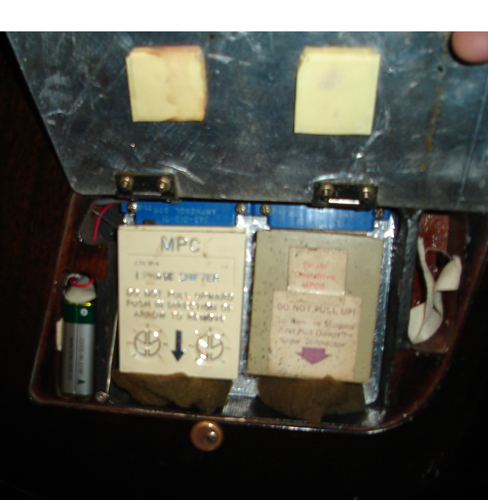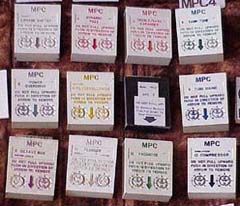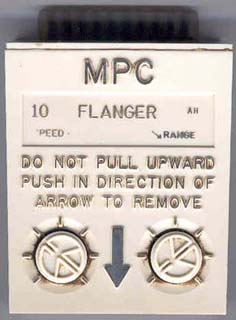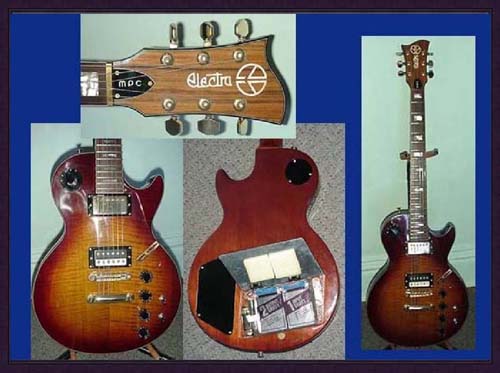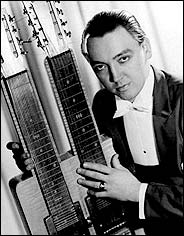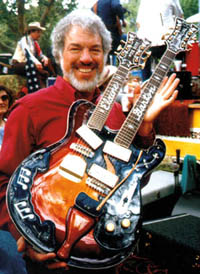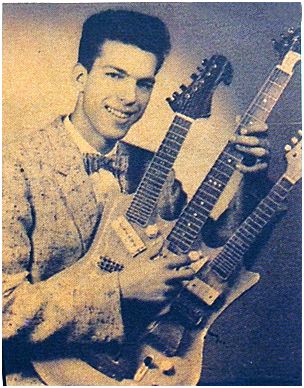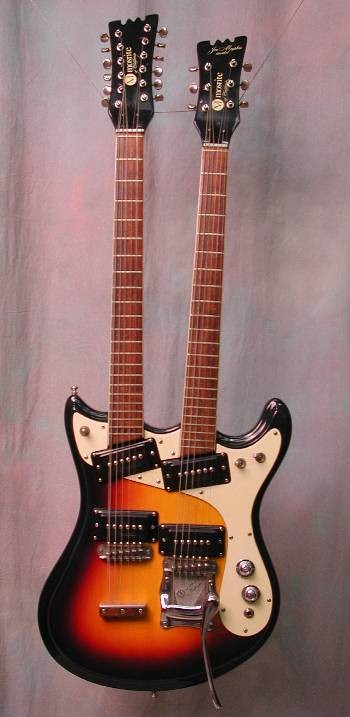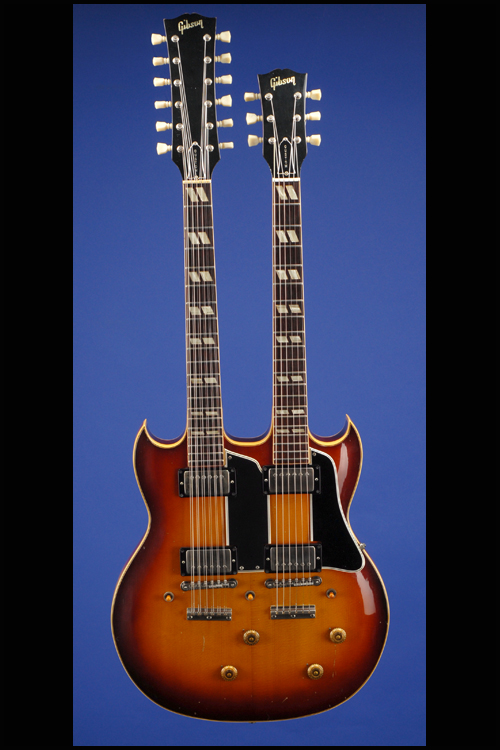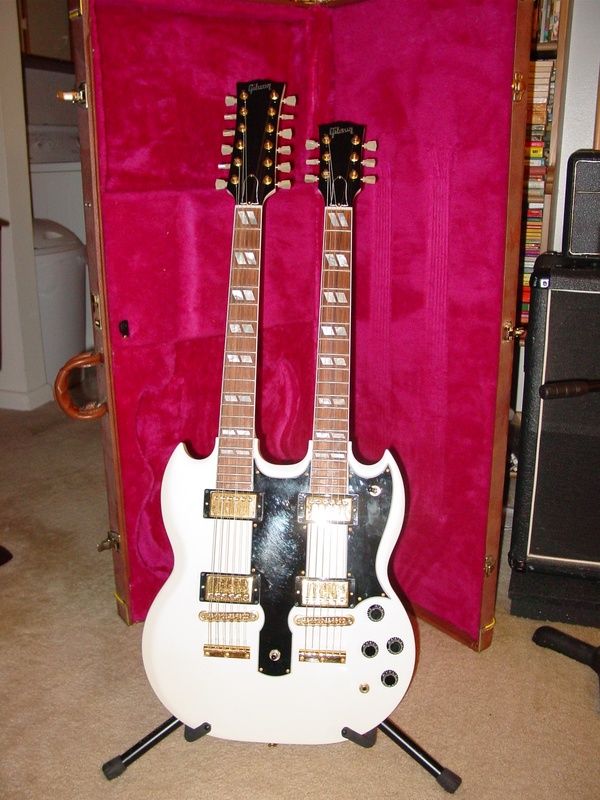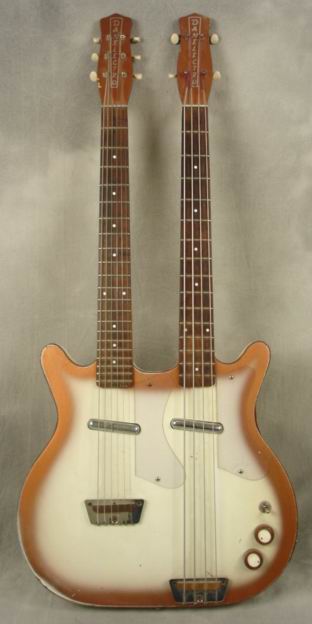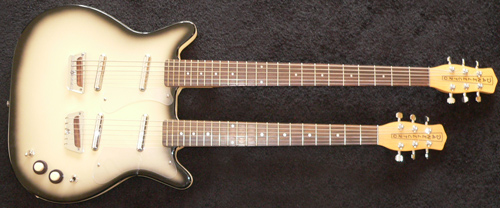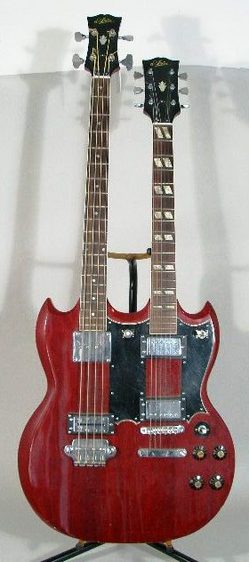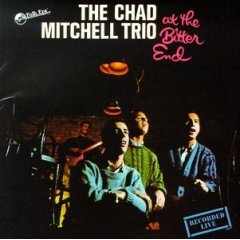I'm dedicating this one to our own Glenn, my son-in-law. We nearly lost him in a tragic automobile accident on the very weekend I started writing this article. I am so glad you are still with us. You are a terrific father and husband. It will get better. Hang in there buddy.The first time I saw Glen Campbell play was on a television show called Shindig It aired from 1964 to 1966, and it featured some top musical acts of that era.
The “house” band on the show were called The Shindogs and comprised of some of Los Angeles’ best session players, whose players alternated from time to time.
The band members included Glen Campbell, Joey Cooper, Chuck Blackwell (drums), Billy Preston, James Burton, Delaney Bramlett, Larry Knechtel (on bass), Leon Russell (on piano) Glen D. Hardin and bass player Ray Pohlman.
Campbell was featured as a solo act on this show, singing and playing an unusual guitar that he seemed to favor. The guitar was a
1960 Teisco model T-60, that featured a set neck, and a hand carved body that had an unusual cut-out on the guitar lower bout and the headstock.
It was equipped with 3 pickups that were made by the company, and a three-piece bridge/saddle unit that resembled the one found on early Fender Telecasters.
The metal pickguard covered much of the body. On it was mounted a volume and tone control and a 3 position rotary switch that chose the pickup. It would be a few years before Teisco (the Tokyo Electric Instrument Company) began flooding the US and European market with cheap electric guitars.
Glen seemed to favor this guitar and used it during his days as a LA studio musician, with The Wrecking Crew. When he first made television appearances, he played this same guitar.
Glen was born into a family of 12 children, His father was a sharecropper. He grew up and lived in a town near Delight, Arkansas. He received his first guitar at age 4 and took to it immediately. Since the neck was not adjustable and the strings were high, his father fashioned a capo out of an old inner tube. His extended family included several musicians. He was fond of reminding people that he was the seventh son of a seventh son.
At age 16 Glen dropped out of high school to pursue a career as a guitar player. His first job was with his uncle Eugene aka Boo, at a nightclub gig in Casper, Wyoming.
In 1956 they traveled to Albuquerque, New Mexico in a group called
The Sandia Mountain Boys, which was led by another Uncle named Dick Bills.
Within a couple of years,
Glen Campbell had formed his own band called The Western Wranglers. By 1960 he moved to Los Angeles California and had a daytime job working for the American Music publishing company, writing songs and performing demo recordings. Word got out about this talented singer/guitar player and he was in demand.
By October of that year he landed a job as a guitarist for The Champs who had recorded the 1958 hit,Tequila. Interestingly, the other Champs members at the time were Jimmy Seals and Dash Crofts.
Around this same time, Glen Campbell was hired by several session producers to play guitar with other anonymous back up musicians that later were came to be known as The Wrecking Crew.
Campbell played on recordings for such well-known acts as Bobby Darin, Ricky Nelson (Travelin’ Man), Dean Martin (he played on the hit Everybody Loves Somebody), Nat King Cole, The Monkees, Nancy Sinatra (These Boots are Made for Walking).
He aslo backed up Merle Haggard, Jan and Dean (Surf City), The Beach Boys (he played acoustic guitar on Be True to Your School, Pet Sounds and other recordings), Ronnie Dove, and Frank Sinatra. Phil Spector sought him out to play on some of his hits recorded by the Righteous Brothers.
Glen Campbell played on recordings for Elvis,
striking up a friendship with The King. Both men came from the same humble Southern roots. Glen played guitar on many demo recordings for Elvis and on the album Viva Las Vega.
By 1961, Campbell had left The Champs to pursue a solo career and was signed by Crest Record, which was a subsidiary of the music publishing company where he worked. His first recording,
“Turn Around, Look at Me” peaked at #62 on the Billboard Hot 100 that same year. It later became a hit for The Vogues.
That same year Campbell formed another band called the Gee Cees with some of the members of The Champs and played at local clubs.
By 1962 he inked a deal with Capitol Records and had a minor hit with the song
“Too Late to Worry, Too Blue to Cry”.He continued to record and write music. However his forte at the time was the session work. He was featured on an incredible 586 recorded songs, despite the fact that he could not read music. He would have someone at the session sing or hum the part and he immediately played it “by ear”.
Not only did he play guitar, but doubled on banjo, mandolin, and bass guitar.
It was in 1964 that Campbell got into television, as a regular on several shows including a California series called Star Route, and the Shindig!, and another California series called Hollywood Jamboree.
Around this same time, Beach Boys founder and song writer Brian Wilson had succumb to a mental breakdown and quit touring with the band.
The Beach Boys hired Glen Campbell to tour with them. For a year, Glen Campbell played bass guitar and sang harmony with the act.
In 1965 Glen Campbell finally had a a solo hit record with a song called Universal Soldier. This anti-war song (the US and allies were in the midst of the Vietnam War) was written by Buffy Sainte-Marie.
The following year, Campbell was hired again by The Beach Boys as a session player for their Pet Sounds album.
Later that year he was hired to play bass guitar by
Ricky Nelson on a tour of the Far East.
During his time as a session player, Glen played his Teisco guitar and an
Epiphone Zephyr Deluxe.It was in 1966 Glen finally struck gold when he was paired with songwriters Jimmy Webb and John Hartford.
He shared a friendship with both men throughout his life time.
John Hartford wrote and recorded Gentle on My Mind and Glen had heard Hartford's version. Campbell hired fellow session players to come into the Capitol Record studio and make a demo of him singing this song so he could pitch it to producer Al De Lory.
During the session, Campbell shouted directions to the players. He left the rough cut for De Lory to hear.
The next day De Lory listened to it and fell in love with the song and Glen's recording. De Lory immediately went to work on it, removing Glens directions to the musicians, but keeping Glens vocal and the music. Without telling Campbell, De Lory went ahead and released the song.
It went on to become a mega hit for Campbell and won a Grammy for John Hartford.In 1968 Campbell followed up with the song Wichita Lineman, which was penned and orchestrated by Jimmy Webb. Webb says he wrote the song as he drove through Washita County in southern Oklahoma.
The road was straight and seemed to go past endless lines of telephone poles. He saw a solitary lineman that was strapped at the top of one of these poles, doing repair work, causing Webb to think about the loneliness of this job. The phrase “singing in the wires” came from the vibrations induced by the electric current flowing through the lines.
In his arrangement he tried to mimic this through the droning of the string parts and the sort of Morse code at the end of the verse. Webb had made a decision that Wichita Lineman had a better ring to it than "Washita" Lineman, so the songs working title was changed.
Campbell's recording was also produced by Al De Lory and charted for 15 weeks in 1968. It is listed among Rolling Stone Magazine’s list of 500 greatest songs of all time.
Campbell followed this up with two other Jimmy Webb songs;
By the Time I Get to Phoenix, and Galveston. By the Time I Get to Phoenix was inspired by Webb’s break up with his girl friend. This song was originally recorded in 1965 by Johnny Rivers but failed to chart. Glen added it to his album in 1967.
The song Galveston was Campbell’s follow up hit, released in 1969. Webb had written it as a war protest song during the Vietnam War years. During the Civil War the Battle of Galveston took place in 1863. I do not know if this battle influenced Webb. What I do know is that Webb imagined a soldier who had come to the realization that he was fighting for a cause that he felt was disingenuous.
Webb imagined the soldier thoughts and put them into these lyrics;
"Wonder if she could forget me, I'd go home if they would let me, Put down this gun, and go to Galveston.”
In 1968 Glen Campbell won 10 Grammys, three Hall of Fame Awards, a lifetime acheivement award, and the Country Music Association's Entertainer of the Year award.
Hawaiian singer Don Ho introduced Glen Campbell to the song. However that profound verse was deleted and changed to;
“I still hear your sea waves crashing, While I watch the cannons flashing, I clean my gun, and dream of Galveston.” This made it less of a protest song, more of a love song, and a number one Billboard hit for Campbell. This song came out in 1969.
Due to his popularity 1968 Glen Campbell was asked by CBS to be the summer time replacement host of the successful Smothers Brothers Comedy Hour variety show. The audience loved him and the following year he was invited to host
The Glen Campbell Goodtime Hour.This show debuted in 1969 and ran through 1972.
Campbell introduced a lot of wonderful musicians on this show, including his friends Jerry Reed, John Hartford, Doug Dillard (the banjo player for the Dillards), and Mason Williams. Toward the end of the show, they would all sit together and play a few songs in the “Pickin’ Pit.
This show introduced a lot of people to Country Music that would not have listened to it otherwise.
Campbell also turned his talent to the movies, making appearances in one flick called Norwood, and the John Wayne movie, True Grit.
While touring Australia Campbell heard a tune by Country Music writer/singer Larry Weiss, called
Rhinestone Cowboy. Campbell related to the song and upon returning to the United States took it to Capitol Record and recorded his version. It charted at number one on the Billboard Hot 100. (For those not familiar with Nashville, Tennessee, Broadway is the street where you can find all the music clubs.)
New Orleans pianist and song writer Allen Toussaint has left us with some incredible music. In 1975 he wrote a song based on the childhood memories of the evenings he spent with his Creole grandparents on the porch of their home.
Toussaint’s version was down tempo, thoughtful, and the lyrics are just plain beautiful. Songwriter Jimmy Webb loved the song and brought it to Glens attention. With the help of his friend, Jerry Reed, they came up with the guitar introduction that featured the treble strings playing a descending two bar passage, while at the same the bass strings played an ascending passage.
Glen’s version was uptempo, and cheerful, and was another hit for him.
Later in his career Campbell continued to tour, had three failed marriages, a fling with Country Music singer Tonya Tucker and had battled substance abuse. Most of this occurred during the mid 1970’s,
Glen finally got the help, discipline, and understanding he needed when, in 1982, he remarried for the last time to
his wife Kim.During the 1990’s he became a successful performer, owning his own Goodtime Theater In Branson, Missouri. He still toured the world giving concerts, sometimes with symphony orchestras.
In 2008 Glen decided to record a project called
Meet Glen Campbell. This featured some songs by Green Day, The Foo Fighters, Dave Grohl, Tom Petty, Jackson Browne, John Lennon, Lou Reed and others. Backing him on this recording were Wendy Melvoin, who played keyboards for Prince, Tom Petty, Rick Neilsen, and Danzig guitarist Todd Youth. In addition to others that sang background, were Campbell's own children.
In 2010 his doctor gave him the dreadful diagnosis that Campbell was in the early stages of Alzheimer disease.
The following year, 2011, Glenn, his wife, and the three children from his marriage to her, embarked on his farewell tour. His three children comprised most of his back up band.
The tour was filmed and the results showed his regression as the disease ravaged his brain. Though he could no longer remember lyrics to songs, he did not forget how to play guitar.
Sadly, he went into the studio and recorded one last song called
I’m Not Going To Miss You. The recording was backed by several of his friends that played in The Wrecking Crew.
Campbell passed away last week on August 8th when the disease robbed his brain of the ability to control his central nervous system. Throughout his career Glen Campbell used a vast collection of guitars. One of the first guitar companies to have a relationship with Campbell was The Ovation guitar.
Ovation guitars were a fairly new comer to the guitar market, having its start around 1965, with the development of an acoustic guitar with a round fiberglass back.
Glen Campbell like the rugged concept of the guitar.He encouraged the company to produce a model with an acoustic pick up, since he did not like to have a microphone stand in front of him.
He also did not think the guitar was loud enough. CEO Charles Kaman took his advice and obliged by having his engineers develop one of the best under-saddle acoustic transducer/pickups that was ever designed.
In a meeting with Campbell, Mr. Kaman gave him one of the first Ovation acoustic-electric Balladeer guitars. Campbell used this guitar, and many other
Ovation guitars on his Goodtime Hour televsion show.Among those guitars were the Ovation Balladeer (this one was redesigned especially for Glen and designated
The Glen Campbell model 1627), an Ovation classical acoustic electric model 1613, an Ovation acoustic electric 12 string model 1615.
He also several Ovation electric models, including a
Tornado electric guitar.Campbell played an Ovation six and 12 string Viper models in a blue-burst finish that were referred to as Bluebirds.
The Tornado guitar that Glen can be seen playing on his TV show is an interesting guitar. Ovation did not build the bodies. They were manufactured in Germany by the same company that made bodies for some Framus guitars. The pickups were made by Schaller, another Germany manufacturer. The bodies and parts were sent to the Kaman factory in Connecticut for assembly and bolt-on Ovation necks were added. Even after the TV series ran its course, and late into his career.
Glen also played an Ovation Breadwinner. This was a uniquely shaped guitar that essentially looked like a battle-ax. The body was made of mahogany, the neck was bolt on, and the electronics were active.
Campbell continued to play Ovation guitars at his concerts throughout his career.
I do not know how much of a relationship Glen had with Semie Moseley, the creator/builder of Mosrite Guitars. I know that Glen played several
Mosrite guitars, including a
12 string electric, a
Mosrite hollow body Ventures 12 string model, and a custom
Mosrite Californian resonator guitar that had 2 pickups.
Semie Moseley of Mosrite took over the Dobro operation from the Dopyera brothers in 1966. Their factory was based in Gardena California.
The first instruments that Mosrite made were assembled from original Dopyera parts in the Gardena factory.
Later on Semi phased in his own components and concepts. This guitar was made with Dobro parts and a Mosrite neck and pickups. Glen's name is inlaid on the fretboard.
He owned two other Mosrite electric guitars and one rare Mosrite acoustic guitar.
One was a
Mosrite Celebrity model. The body was made by Framus, the neck, pickups, and electronics were by Moseley. The vibrato was made by Framus.
The other was a
1966 Mosrite Plainsman Dobro electric guitar. This one was made by Dobro. Semie Moseley added the pickup, electronics, and added a Mosrite neck.
The acoustic model is a 1
965 Mosrite Serenader. The body is solid spruce, the back and sides are solid mahogany. The dove tailed neck has the Mosrite headstock. The unique pickguard has a tortoise-shell appearance. Glenn owned two of these guitars.
Campbell played a Fender Bass VI on Wichita Lineman, and Galveston.
Much later in his career he routinely played a dark blue Fender Stratocaster. On one of the forums that I used to visit, a guitar tech said that one of Glen's guitar techs brought it into his shop for some quick repairs and adjustments. He commented on the forum that it was a great guitar. Glen also owned a Lake Placid Blue stratocaster, a black stratocaster, and a red strat with twin humbuckers.
You can see from one picture towards the top of the page, Glen started out playing a Telecaster that was equipped with a Bigsby B5.
This Tele had the Bigbsy as an add-on, longer before Fender offered this option in 1967. The photo is from around 1956. He is playing at a store that sells house paint.
Glenn also owned and played a G&L Comanche, which was a strat-style guitar that had split pickups.
Glen owned and played so many guitars, it is difficult to mention all of them.
Glen owned several Martin guitars, one was a Martin N-20 classical model.
The other was probably a Martin D-28, since the sides appear to be rosewood.
Glen loved 12 string guitars. He played his is can be often seen playing his Ovation Viper 12 string.
Later played a beautiful Hamer 12 string electric guitar that he used in concert when he played Southern Nights.
Glen was an amazing guitarist and vocalist. In fact he is one of the most versatile guitarists ever.
As a session player he played on many of the Beach Boys songs, and also played on Frank Sinatra's classic recording of Strangers In The Night. He loved his family, and made a life with his music that many of us can only dream about.
He remained an incredibly talented man right up to the end. He will be missed.
Glen plays an incredible solo on a vintage late 1950's Stratocaster in this video




































































